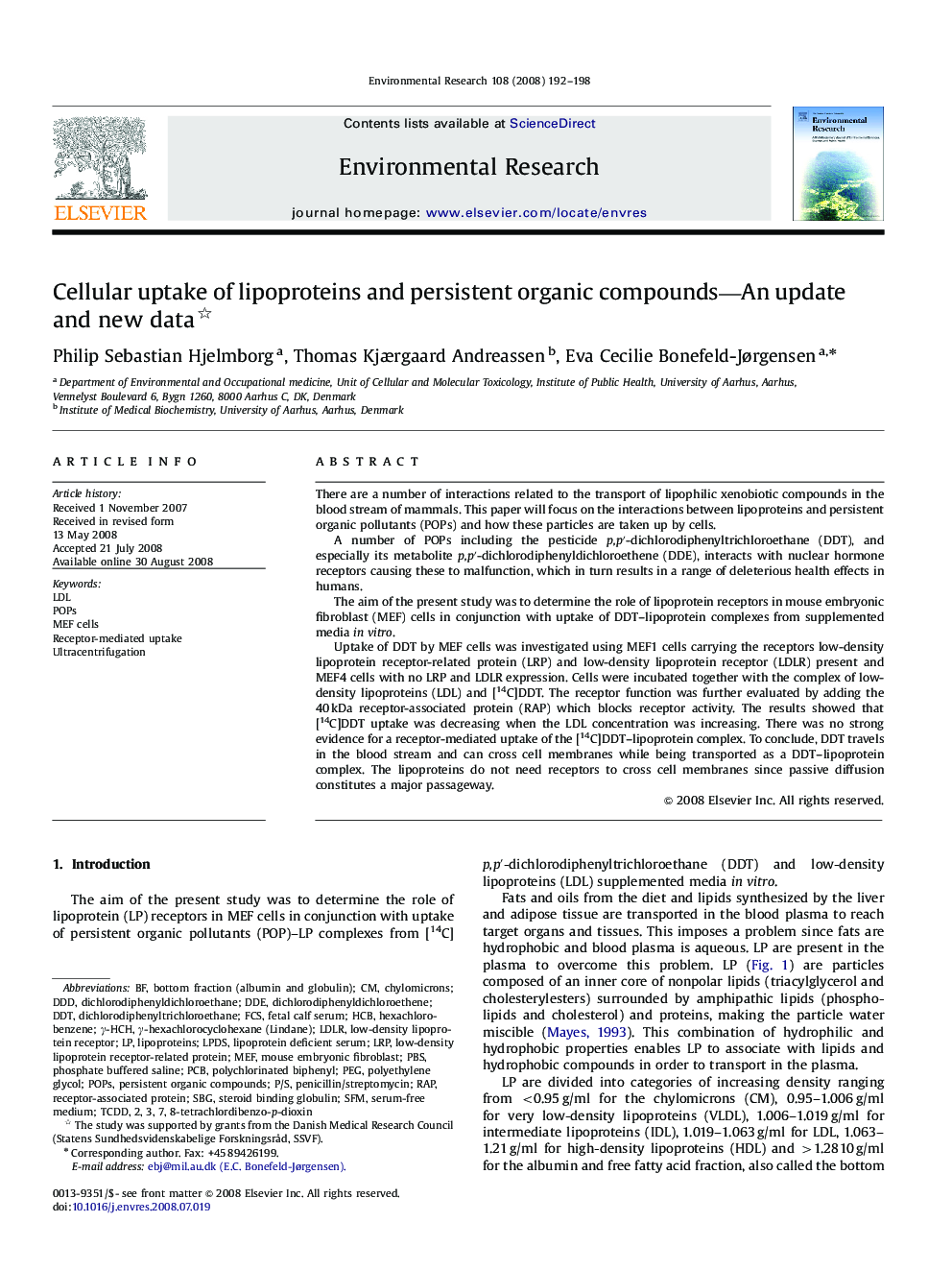| کد مقاله | کد نشریه | سال انتشار | مقاله انگلیسی | نسخه تمام متن |
|---|---|---|---|---|
| 4470442 | 1314425 | 2008 | 7 صفحه PDF | دانلود رایگان |

There are a number of interactions related to the transport of lipophilic xenobiotic compounds in the blood stream of mammals. This paper will focus on the interactions between lipoproteins and persistent organic pollutants (POPs) and how these particles are taken up by cells.A number of POPs including the pesticide p,p′-dichlorodiphenyltrichloroethane (DDT), and especially its metabolite p,p′-dichlorodiphenyldichloroethene (DDE), interacts with nuclear hormone receptors causing these to malfunction, which in turn results in a range of deleterious health effects in humans.The aim of the present study was to determine the role of lipoprotein receptors in mouse embryonic fibroblast (MEF) cells in conjunction with uptake of DDT–lipoprotein complexes from supplemented media in vitro.Uptake of DDT by MEF cells was investigated using MEF1 cells carrying the receptors low-density lipoprotein receptor-related protein (LRP) and low-density lipoprotein receptor (LDLR) present and MEF4 cells with no LRP and LDLR expression. Cells were incubated together with the complex of low-density lipoproteins (LDL) and [14C]DDT. The receptor function was further evaluated by adding the 40 kDa receptor-associated protein (RAP) which blocks receptor activity. The results showed that [14C]DDT uptake was decreasing when the LDL concentration was increasing. There was no strong evidence for a receptor-mediated uptake of the [14C]DDT–lipoprotein complex. To conclude, DDT travels in the blood stream and can cross cell membranes while being transported as a DDT–lipoprotein complex. The lipoproteins do not need receptors to cross cell membranes since passive diffusion constitutes a major passageway.
Journal: Environmental Research - Volume 108, Issue 2, October 2008, Pages 192–198